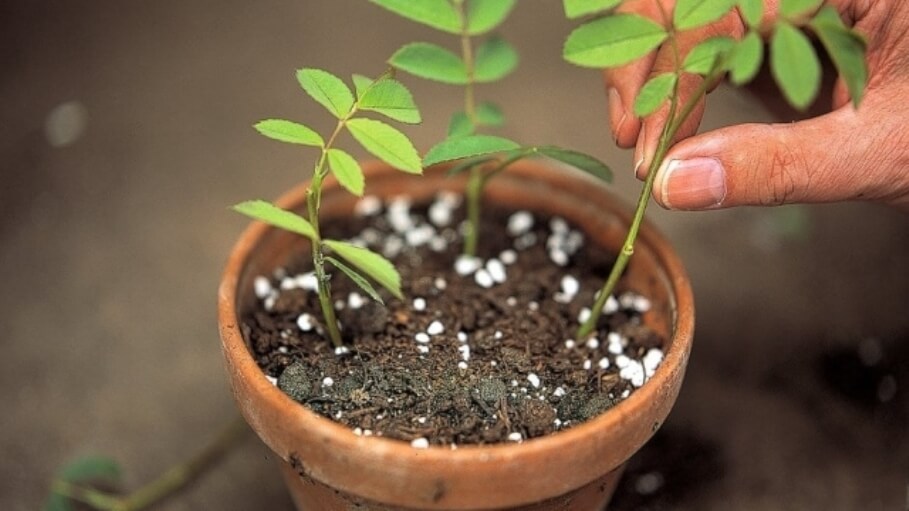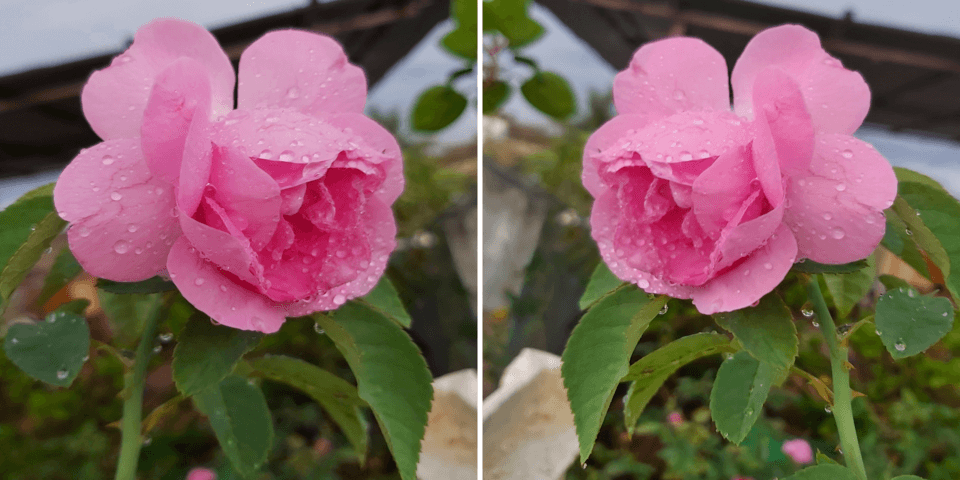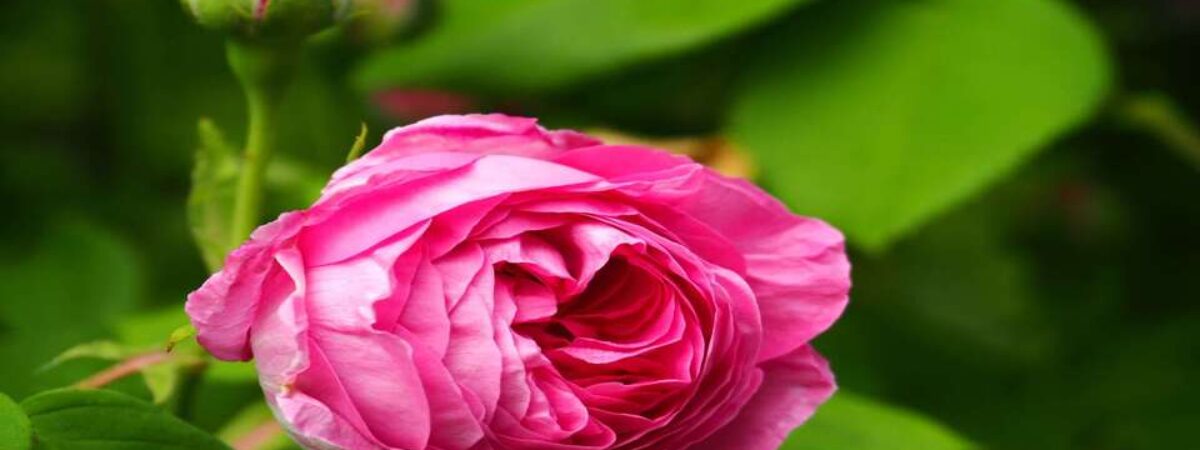Roses are one of the most favorite and prized flowers one can grow in any garden. They enhance the beauty of any garden manyfold.
While roses look pretty and are the pride of your garden, they also need some special care and maintenance to flourish.
Read on to find out how to plant and grow roses and get an amazing rose bush.
Suitable condition to grow roses
Roses crave for sun. So choose a site where the plant gets at least 6 hours of sun. Some varieties of roses might do well in partial shade but most roses prefer bright sun.
But when you grow roses in areas with extremely hot conditions with limited water availability, then a shady area might make the roses happy.
Roses can grow in any kind of soil. A well-drained soil with a pH of 5.5 to 7.0 is best for the roses to thrive.
Roses need deep watering but if there is no proper drainage, the weighted soil might rot the root.
You need to protect the roses from the strong wind as they may damage the growth of your rose plant.
Keep at least 3 feet distance between rose plants to provide enough airflow that will discourage any kind of fungal diseases like powdery mildew or black spot on leaves.
Equipment and materials needed
The equipment and materials you need for the job are a trowel, hand gloves, bone meal, new rose plant, compost, and mulch.
Propagation
The rose plant can be propagated from cuttings and after propagation, it can be transplanted to a bigger container or onto the ground.
If you have got hold of a rose plant, then it can be directly planted to the ground, which we will be discussing in this article.
Preparing the soil

After you have done finding a suitable site for your rose plants, now it’s time to prepare the soil for the plantation.
As mentioned earlier, make sure the soil is well draining. Now dig a 14 x 18 inches deep and 18 X 24 inches wide hole.
Mix bone meal to the soil you have just removed and keep it aside for refilling after the rose is planted to the ground.
You can also mix compost with the removed soil for better growth.
How to plant a rose plant?
Now that the soil is prepared, it’s time now to prepare the rose for planting.
If you have propagated the rose earlier and placed it in a small container, then carefully take out the plant from the container making sure the roots are intact.
Then place the rootballs in the already dug hole and backfill the soil mixed with bonemeal. Backfill all the soil and water the plant thoroughly.
If you have purchased the plant from a nursery, then make sure to remove it from the pot carefully. Clutching the base of the plant and inverting the pot will let the plant come out of the pot easily.

If you have a bare root plant, then thoroughly check out for any broken roots or root rot. If you find those, then take them out immediately. Place the roots for soaking the water for about 12 hours to keep it hydrated before planting.
For bare root rose plants, make a mound using the removed soil mixed with bonemeal in the center of hole. Make sure that the mound is high enough so that the graft union is placed just below the soil level.
If you have grown the rose plant in a container, then just put the rootball in the hole. When you place the rootball in the hole, make sure that the graft union is 1 inch below the soil line.
After placing the plant in the correct position, backfill the soil. Water the soil to help the plant get settled properly. Keep filling the soil and pat the root zone area gently.
Water thoroughly and apply mulch. Water your new rose plants every other day. You may need to water daily if you are growing it in dry weather to get the plant established quickly.
Once the plant gets established, it will start to notice new growth.
Pests and diseases
Established and flowering rose plants often attract various pests and diseases.
Black spots and powdery mildew are the most common fungal diseases that affect rose plants. They weaken the plant and reduce the ability to produce bloom. You will see leaf drops and discoloration of leaves.
Always look out for these diseases and take corrective measures at the first sign itself. The earlier you control these diseases the better.
You can spray fungicides on the infected rose bushes to drive these diseases out. You can also keep the leaves as dry as possible as the fungus thrive on wet and moist conditions. So water only on the base of the plant, not on leaves.
Another way is to just cut and throw away the infected part to prevent further spread.
Rose bushes can attract pests like aphids, mealybugs, and mites. The best way to protect the plant from pests is by applying systemic pesticides. These can be mixed with soil and can also be used in combination with fungicides.
If you want to go the organic way, use of neem oil is the best to get rid of these pests.
Care Instructions
Most roses bloom throughout the year and roses are always heavy feeders. So they need to be taken care of with proper fertilizers and timely watering.
Application of NPK (10-10-10) will keep the rose plants in good shape. The balanced NPK application will provide the healthy foliage, stronger root and beautiful bloom.
You can also apply mulches in the form of leaf mold and rotted manure to the base of the plant. Mulches help prevent foliage diseases as it restricts water splashing on the leaves. Continuous water splashing on leaves encourages fungal diseases.
Keep watering the rose plants frequently to encourage a stronger root system and get the plant established. You can mix the granular fertilizers to the soil during spring or throughout the growing season.
Stop watering once the frost sets in but continue watering if you are growing the plant in a hot weather condition.
Always look out for faded blooms and remove those. This process is called deadheading. Deadheading encourages further bloom and also bushier rose plants. It also keeps the plant clean.
Pro Tips for amazing bloom

Here are some pro tips you can use while growing your favorite rose plants.
- Always prune the cuttings to about 6 to 8 inches long and remove all leaves or existing flower buds. It will make the plant use its energies more on root formation than keeping the leaves alive. Always transplant the rose plant before early spring.
- Avoid planting the rose in extremely hot weather conditions. Planting it when the temperature is around 60 degrees Fahrenheit would give the plant enough time to form a stronger root before harsh summer sets in.
Now that you have all the information on growing amazing rose bushes, go ahead and start yours now.
Are you a rose aficionado? Do share your experiences of growing rose plants with us in the comment section.
You may also like to read
Propagating Hibiscus: Grow the Beautiful Plant in Your Garden






